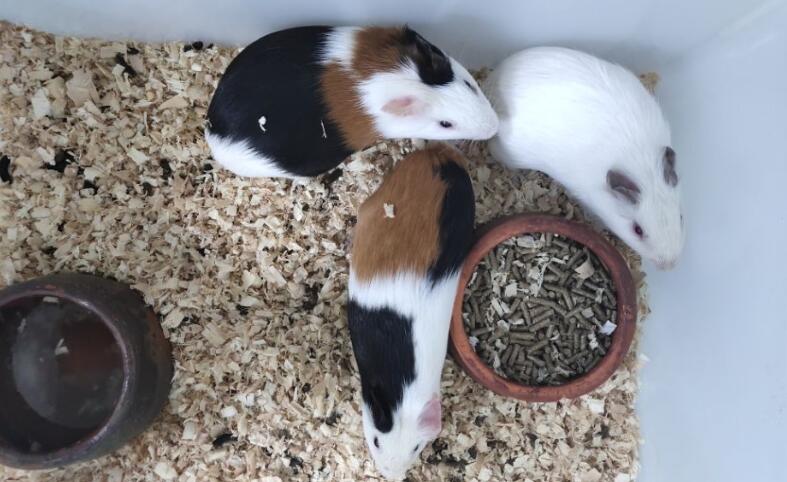Mouse Model for Idiopathic Thrombocytopenia Purpura (ITP)
Primary Immune thrombocytopenia; Autoimmune Thrombocytopenic Purpura; Immune Thrombocytopenic Purpura
- Product No.DSI535Mu01
- Organism SpeciesMus musculus (Mouse) Same name, Different species.
- Prototype SpeciesHuman
- SourceInduced by inject GP-APS
- Model Animal StrainsBalb/c Mice(SPF), healthy, male, age: 8~10weeks, body weight:30g~35g.
- Modeling GroupingRandomly divided into six group: Control group, Model group, Positive drug group and Test drug group.
- Modeling Period4-6 weeks
- Modeling Method1.Platelet Separation Method:
Collect blood in mice eyes, place samples into the tube , 30 mins later centrifugate at 800rpm for 10 mins. Take supernatant, centrifugate at 3500rpm for 10 min, the bottom of the tube was platelets. Add 1% ammonium oxalate solution (50~100 μl) to the tube, stir lightly, then add 1% ammonium oxalate solution (2~3ml), settle for 5 minutes to dissolve red blood cells .Centrifugation at 3500rpm for 10 mins, add a little platelets washing solution to make suspension and abandon the supernatant. Centrifugation at 3300rpm for 10 mins, add a little platelets washing solution to make suspension and abandon the supernatant. The platelets were used as antigens to immunize cavia, and the guinea pig serum was injected into mice to make the anaphylactoid purpura model. This method is easy to operate, can get high concentration of platelets, and solve the problem of poor platelet purity.
2.Serum immune of cavia
2.1 Mix equal platelets and Freund's Adjuvant Complete, water-in-oil emulsion, at 0 week injection of guinea pig foot, dorsal and subcutaneous .
2.2 Mix equal platelets and Freund's Adjuvant Uncomplete, water-in-oil emulsion, at 1, 2, 4 week injection of guinea pig foot, dorsal and subcutaneous respectively.
2.3 Heart blood collection at 5 weeks, centrifugation at 3000rpm for 10 mins, the supernatant is cavia anti-mouse platelet serum(GP-APS).
2.4 Inactivation of complement at 56℃ for 30 mins.After diluted with saline, store at -20℃.
3.Mouse ITP Modeling Method
Next day injecte cavia anti-mouse platelet serum(GP-APS) to build the mouse ITP model. At day 0, 2, 4, 6, 8, 10, inject attenuat(1:4) cavia anti-mouse platelet serum(GP-APS) according to 100ul/20g.
; - ApplicationsDisease Model
- Downloadn/a
- UOM Each case
- FOB
US$ 200
For more details, please contact local distributors!
Model Evaluation
General feature: After the second APS injection, obvious subcutaneous purpura were observed in all mouse model, especially injection site. At the 4th day, mental depression, squinting, piling up, slow reaction, slow movement, walking instability, hair withered, inappetence, weight loss and other feature appeared gradually.
Pathological Results
After the experiment (day 11), eyes blood collection, using an Automatic Blood Cell Count Analyzer to detect peripheral blood, a flow cytometry to detect peripheral blood lymphocyte subsets. Peel sternum, take marrow to make slice, Wright's staining.
Cytokines Level
Statistical Analysis
SPSS software is used for statistical analysis, measurement data to mean ± standard deviation (x ±s), using t test and single factor analysis of variance for group comparison, P<0.05 indicates there was a significant difference, P<0.01 indicates there are very significant differences.
GIVEAWAYS
INCREMENT SERVICES
-
 Tissue/Sections Customized Service
Tissue/Sections Customized Service
-
 Serums Customized Service
Serums Customized Service
-
 Immunohistochemistry (IHC) Experiment Service
Immunohistochemistry (IHC) Experiment Service
-
 Small Animal In Vivo Imaging Experiment Service
Small Animal In Vivo Imaging Experiment Service
-
 Small Animal Micro CT Imaging Experiment Service
Small Animal Micro CT Imaging Experiment Service
-
 Small Animal MRI Imaging Experiment Service
Small Animal MRI Imaging Experiment Service
-
 Small Animal Ultrasound Imaging Experiment Service
Small Animal Ultrasound Imaging Experiment Service
-
 Transmission Electron Microscopy (TEM) Experiment Service
Transmission Electron Microscopy (TEM) Experiment Service
-
 Scanning Electron Microscope (SEM) Experiment Service
Scanning Electron Microscope (SEM) Experiment Service
-
 Learning and Memory Behavioral Experiment Service
Learning and Memory Behavioral Experiment Service
-
 Anxiety and Depression Behavioral Experiment Service
Anxiety and Depression Behavioral Experiment Service
-
 Drug Addiction Behavioral Experiment Service
Drug Addiction Behavioral Experiment Service
-
 Pain Behavioral Experiment Service
Pain Behavioral Experiment Service
-
 Neuropsychiatric Disorder Behavioral Experiment Service
Neuropsychiatric Disorder Behavioral Experiment Service
-
 Fatigue Behavioral Experiment Service
Fatigue Behavioral Experiment Service
-
 Nitric Oxide Assay Kit (A012)
Nitric Oxide Assay Kit (A012)
-
 Nitric Oxide Assay Kit (A013-2)
Nitric Oxide Assay Kit (A013-2)
-
 Total Anti-Oxidative Capability Assay Kit(A015-2)
Total Anti-Oxidative Capability Assay Kit(A015-2)
-
 Total Anti-Oxidative Capability Assay Kit (A015-1)
Total Anti-Oxidative Capability Assay Kit (A015-1)
-
 Superoxide Dismutase Assay Kit
Superoxide Dismutase Assay Kit
-
 Fructose Assay Kit (A085)
Fructose Assay Kit (A085)
-
 Citric Acid Assay Kit (A128 )
Citric Acid Assay Kit (A128 )
-
 Catalase Assay Kit
Catalase Assay Kit
-
 Malondialdehyde Assay Kit
Malondialdehyde Assay Kit
-
 Glutathione S-Transferase Assay Kit
Glutathione S-Transferase Assay Kit
-
 Microscale Reduced Glutathione assay kit
Microscale Reduced Glutathione assay kit
-
 Glutathione Reductase Activity Coefficient Assay Kit
Glutathione Reductase Activity Coefficient Assay Kit
-
 Angiotensin Converting Enzyme Kit
Angiotensin Converting Enzyme Kit
-
 Glutathione Peroxidase (GSH-PX) Assay Kit
Glutathione Peroxidase (GSH-PX) Assay Kit
-
 Cloud-Clone Multiplex assay kits
Cloud-Clone Multiplex assay kits
| Catalog No. | Related products for research use of Mus musculus (Mouse) Organism species | Applications (RESEARCH USE ONLY!) |
| DSI535Mu01 | Mouse Model for Idiopathic Thrombocytopenia Purpura (ITP) | Disease Model |






